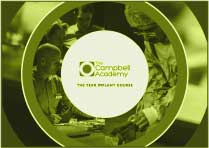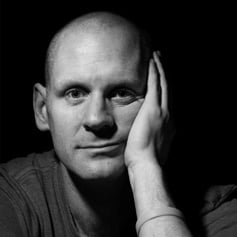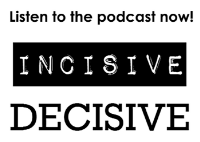.png?width=1627&height=517&name=Full%20TCA%20Logo%20(Purple).png)
Healthcare is messy and the problem is that we try to teach scientists to do healthcare.
If you want to enter medicine or dentistry now the best A Levels you can select are chemistry, biology and maths (my eldest daughter is currently studying these 3 A Levels)
The people who study these are scientists, not artists and not creatives.
Someone who does history and art and English literature is unlikely to pursue a career in dentistry. The difficulty is when the scientist enters dentistry, they expect it to be scientific. They expect to make their decisions based on analytics, on a yes or no, black and white answer (that’s what science is)
They expect to be able to look at a patient and say “Don’t worry, I’ll do this and then the outcome will be that”
What happens when it doesn’t go like that? God knows, all too often, it doesn’t go like that.
John Gibson, now the Dean of Aberdeen Dental School, taught me the lesson when I was a House Officer in Oral Medicine at Glasgow Dental School in 1995, that I had just taken five years to learn the science of dentistry and now it was time to take five years to learn the art.
I remembered that this week as I saw a patient at the practice at 8pm on Friday evening.
It had been a very long week and a very long Friday which started at 7am getting ready to teach a year-long course in implant dentistry. I had introduced the course and had some discussion before popping out for a meeting with the bank about millions of pounds of development funding, followed by 2 hours at my all-day quarterly team meeting and then back to the course. I went back home quickly then off to coach the football team before heading to the practice to see a patient who was in difficulty.
This patient had two dental implants placed by me some time ago and had elected to leave a tooth in front of this which had previously been root treated for a long time but had an area on the x-ray. I made the decision (in conjunction with others) that it was well left alone as it was a well root treated tooth and was probably just a historical lesion.
Following implant surgery this lady had considerable problems, pain and discomfort. The root was re-root treated by an expert but the pain persisted and the tooth was then extracted.
On Friday at 8pm I saw the patient with a post-operative infection at the extraction site in considerable pain and distress.
Where’s the science in that? There’s no point in me saying to the patient that she’s a statistical anomaly and that it doesn’t fit in with logical scientific thinking for this to happen.
There’s more to it than that.
Medicine and dentistry is messy at times, difficult to rationalise and difficult to account for. Despite the fact that we charge patients for this doesn’t mean it’s forced to go right.
I love the concept of evidence-based practice, I love talking to young graduates or under-graduates about evidence-based practice but equally as important is the discussion about the ethereal nature of healthcare provision and the overall messiness of the provision.
It is for this reason that we must encourage them to investigate the creative side of practice at least as much as the scientific.
Blog Post Number: 1944






Leave a comment